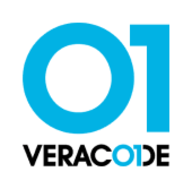

Find out in this report how the two Dynamic Application Security Testing (DAST) solutions compare in terms of features, pricing, service and support, easy of deployment, and ROI.


Fortify WebInspect is an automated DAST solution that helps security professionals and QA testers uncover security vulnerabilities and configuration concerns by providing complete vulnerability detection. This is accomplished by mimicking real-world external security attacks on a live application in order to discover and prioritize concerns for root-cause study. Fortify WebInspect provides a number of REST APIs for easier integration, as well as the ability to be maintained via an intuitive UI or totally automated.
Fortify WebInspect may be used as a completely automated solution to suit DevOps and scaling requirements, and it integrates seamlessly with the SDLC. REST APIs aid in closer integration by automating scans and ensuring that compliance standards are satisfied. Users can make use of pre-built integrations for Micro Focus Lifecycle Management (ALM) and Quality Center, as well as other security testing and management platforms.
Teams may reuse current scripts and tools thanks to powerful connectors. Any Selenium script can be simply integrated with Fortify WebInspect. Fortify WebInspect supports Swagger and OData formats via the WISwag command line tool, allowing it to work with any DevOps workflow. A scan template can be pre-configured by ScanCentral Admin and sent to users to scan their apps, with zero security knowledge required.
Fortify WebInspect Features
Fortify WebInspect has many valuable key features. Some of the most useful ones include:
Fortify WebInspect Benefits
There are many benefits to implementing Fortify WebInspect. Some of the biggest advantages the solution offers include:
Reviews from Real Users
Fortify WebInspect stands out among its competitors for a number of reasons. One major one is its robust centralized dashboard, which gives insight into all vulnerabilities.
Milin S., an Information Security Architect at a real estate/law firm, writes of the product, “Reporting, centralized dashboard, and bird's eye view of all vulnerabilities are the most valuable features. The vulnerability management part of it is very easy. We can suppress or comment on each vulnerability and assign a vulnerability to an individual risk owner, which makes the work easy.”
Veracode is a leading provider of application security solutions, offering tools to identify, mitigate, and prevent vulnerabilities across the software development lifecycle. Its cloud-based platform integrates security into DevOps workflows, helping organizations ensure that their code remains secure and compliant with industry standards.
Veracode supports multiple application security testing types, including static analysis (SAST), dynamic analysis (DAST), software composition analysis (SCA), and manual penetration testing. These tools are designed to help developers detect vulnerabilities early in development while maintaining speed in deployment. Veracode also emphasizes scalability, offering features for enterprises that manage a large number of applications across different teams. Its robust reporting and analytics capabilities allow organizations to continuously monitor their security posture and track progress toward remediation.
What are the key features of Veracode?
What benefits should users consider in Veracode reviews?
Veracode is widely adopted in industries like finance, healthcare, and government, where compliance and security are critical. It helps these organizations maintain strict security standards while enabling rapid development through its integration with Agile and DevOps methodologies.
Veracode helps businesses secure their applications efficiently, ensuring they can deliver safe and compliant software at scale.
We monitor all Dynamic Application Security Testing (DAST) reviews to prevent fraudulent reviews and keep review quality high. We do not post reviews by company employees or direct competitors. We validate each review for authenticity via cross-reference with LinkedIn, and personal follow-up with the reviewer when necessary.